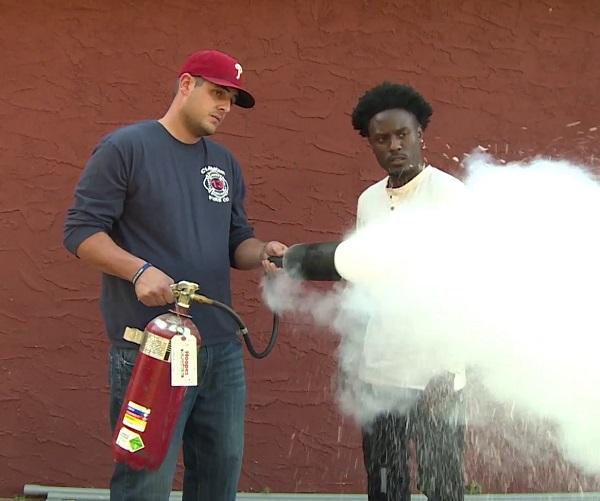In this article, I will describe a few tips on how to properly use a fire extinguisher in your workplace.
One crucial aspect of fire safety is knowing how to properly use a fire extinguisher. Having a fire extinguisher on hand and knowing how to use it can mean the difference between a small fire becoming a larger one and potentially causing more damage or injury.
Match the Extinguisher to the Type of Fire: The first step in using a fire extinguisher is to identify the type of fire it is appropriate for. Fire extinguishers are labeled with the types of fires they can be used on, such as A, B, C or D, and the letter K for kitchen fires. It is important to use the correct type of extinguisher for the type of fire you are dealing with. Using the wrong type of extinguisher can cause the fire to spread or make it more difficult to put out. For example, a Class A fire extinguisher is used for fires involving ordinary combustibles such as wood, paper, or cloth, while a Class B fire extinguisher is used for fires involving flammable liquids, gases, or greases. Using the wrong type of extinguisher can make the fire worse or even cause an explosion.
It’s Also Important to Know When to Evacuate and Call 911. If the fire is too large or out of control, do not attempt to fight it. Instead, immediately evacuate the area and call 911. If the fire extinguisher runs out or the fire is not being effectively controlled, it’s important to leave the area and call for professional help. It’s important to remember that the primary goal during a fire emergency is to evacuate safely and call the fire department. Fighting a fire should only be done as a last resort, and only if it is safe to do so. It’s important to know when it’s time to evacuate and when to call for professional help.
Remember the Acronym, “PASS”: Once you have identified the appropriate extinguisher, it is important to remember the acronym “PASS” which stands for Pull, Aim, Squeeze, and Sweep. To use the extinguisher, pull the pin at the top of the extinguisher, aim the nozzle at the base of the fire, squeeze the handle to release the extinguishing agent and sweep the nozzle from side to side across the base of the fire. This method ensures that the extinguisher is used correctly and effectively. It’s important to remember the acronym PASS and follow the instructions to ensure the fire is put out quickly and safely.
Regularly Inspect and Maintain Your Exintguishers: It’s also important to regularly inspect and maintain fire extinguishers to ensure they are in working order. This includes checking the pressure gauge to ensure it is in the safe range and ensuring the extinguisher is not expired or damaged. It’s also a good idea to have a fire extinguisher training program in place for all employees, so they know how to properly use the extinguisher in case of an emergency. Regular inspection and maintenance of fire extinguishers ensures that they are in good working order and ready to be used in case of an emergency. It also ensures that employees are familiar with how to use the extinguisher and can respond quickly in case of an emergency.
Have a Clear Evacuation Plan: Additionally, it’s important to have a clear evacuation plan and emergency procedures in place. It’s important to regularly review and update these plans to ensure all employees know what to do in case of a fire emergency. A clear evacuation plan and emergency procedures ensure that employees know how to respond quickly and safely in case of an emergency. It also ensures that everyone is on the same page and knows what to do in case of an emergency.
In conclusion, proper use of a fire extinguisher can mean the difference between a small fire becoming a larger one and potentially causing more damage or injury. It’s important to identify the appropriate type of extinguisher, remember the PASS method, and know when to evacuate and call 911. Regular inspection and maintenance of fire extinguishers, as well as having a clear evacuation plan and emergency procedures in place, are also crucial for fire safety in the workplace. By taking these steps, we can all be prepared in case of a fire emergency.










